

In a web report, you can choose to show certain groups of records according to your requirements, and switch among the groups to see the data you want.
After a "going" action has been performed, the data presented in the component will be re-loaded from the data buffer, showing only the records in the selected group, and the new report created can be viewed, printed, and exported to other formats in the same way as the original report.
Assume you have created a chart report of Clustered Bar 2-D type on the business view WorldWideSalesBV in Data Source 1 of the SampleReports catalog in the Webdemo folder, which shows product sales information with Region as the field on the category axis, Sales Year as the field on the series axis, and Total Sales as the field on the value axis, and applies the default style to the chart. The chart shows as follows:
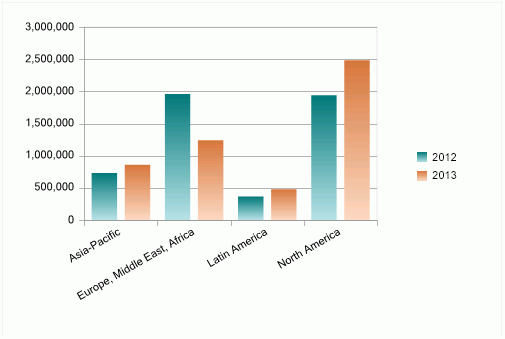
The business view WorldWideSalesBV has defined the following hierarchical relationship: Region > Country > State > City.
We will now take the chart as an instance to illustrate the going functions.
The go-to action enables jumping to a different group by replacing the current. It is performed on chart categories and series.
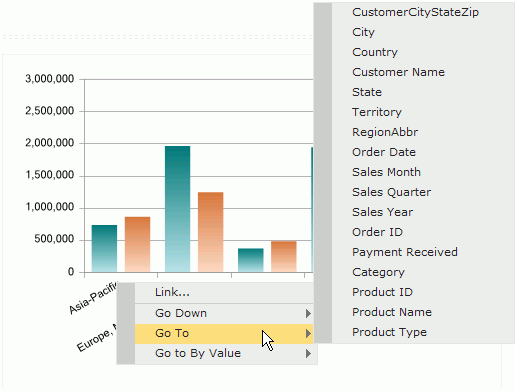
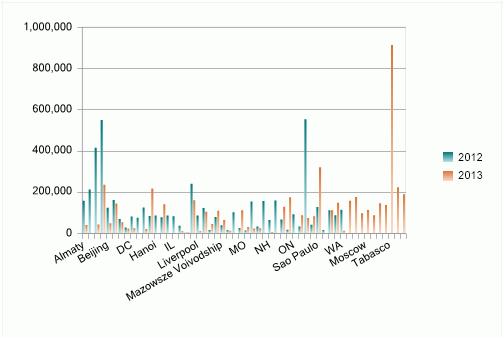
 on the toolbar.
on the toolbar.The go-to-by-value action allows showing the information of another group while applying the current value being clicked on as a filter condition. It is performed on crosstab column/row headers, table groups, and chart categories and series.

We can see that the result is different from that of go-to. This is because that, for the go-to-by-value action, the group of categories changes to State while being filtered by the Region value Asia-Pacific. That is, on the basis of the go-to action, a filtering action where Region = Asia-Pacific is performed at the same time, and thus the result of go-to-by-value is generated.
In addition, when a go-to-by-value action is performed, the "Go To" Filter panel will be displayed on the left of the Web Report Studio window, showing the group and the value that the filter is based on.
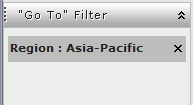
 on the toolbar.
on the toolbar.The go-down action allows going from a non-bottom level group to the one-level-lower group while applying the current selected value as a filter condition. It is performed on table groups, crosstab column/row headers, and chart categories and series.
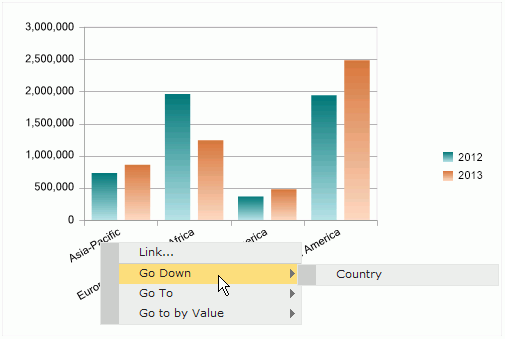
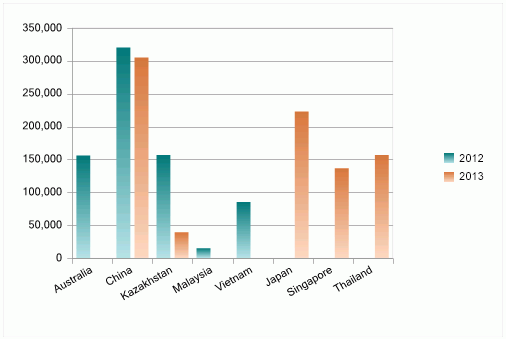

After these two go-down actions, we can see two filters are added in the "Go To" Filter panel, Region = Asia-Pacific and Country = China.
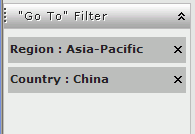
This is because, when you perform a go-down action, a filter will be created based on the value you click on. In this example, we first click on the Asia-Pacific region, so JReport drills this region one-level down to display countries in Asia Pacific, and thus the filter Region = Asia-Pacific is created. If you want all data in the one-level-lower group to be displayed when you drill down a group, you can remove the corresponding filter from the "Go To" Filter panel, by clicking X beside the filter condition.
The go-up action allows jumping from a group which is non-top level in a predefined hierarchy to the one-level-higher group. It is performed on table groups, crosstab column/row headers, and chart categories and series.
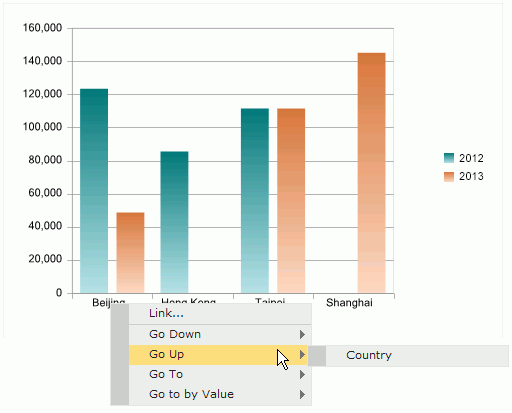


The go-to-detail action is performed on the summary of the tables, crosstabs and charts. First define a table and make it contain the information you would like to view about the summary values. Suppose that the summary is total sales in different countries. Then when you perform go-to-detail action on the value of total sales in France, you will get the table displaying the fields you defined and having applied the filter condition Country=France. When you go to detail of the total sales in another country, the table will display the data of that country.
To define the detail table for a summary and perform the go-to-detail action on it:
 or
or  .
. on the toolbar.
on the toolbar.Notes: